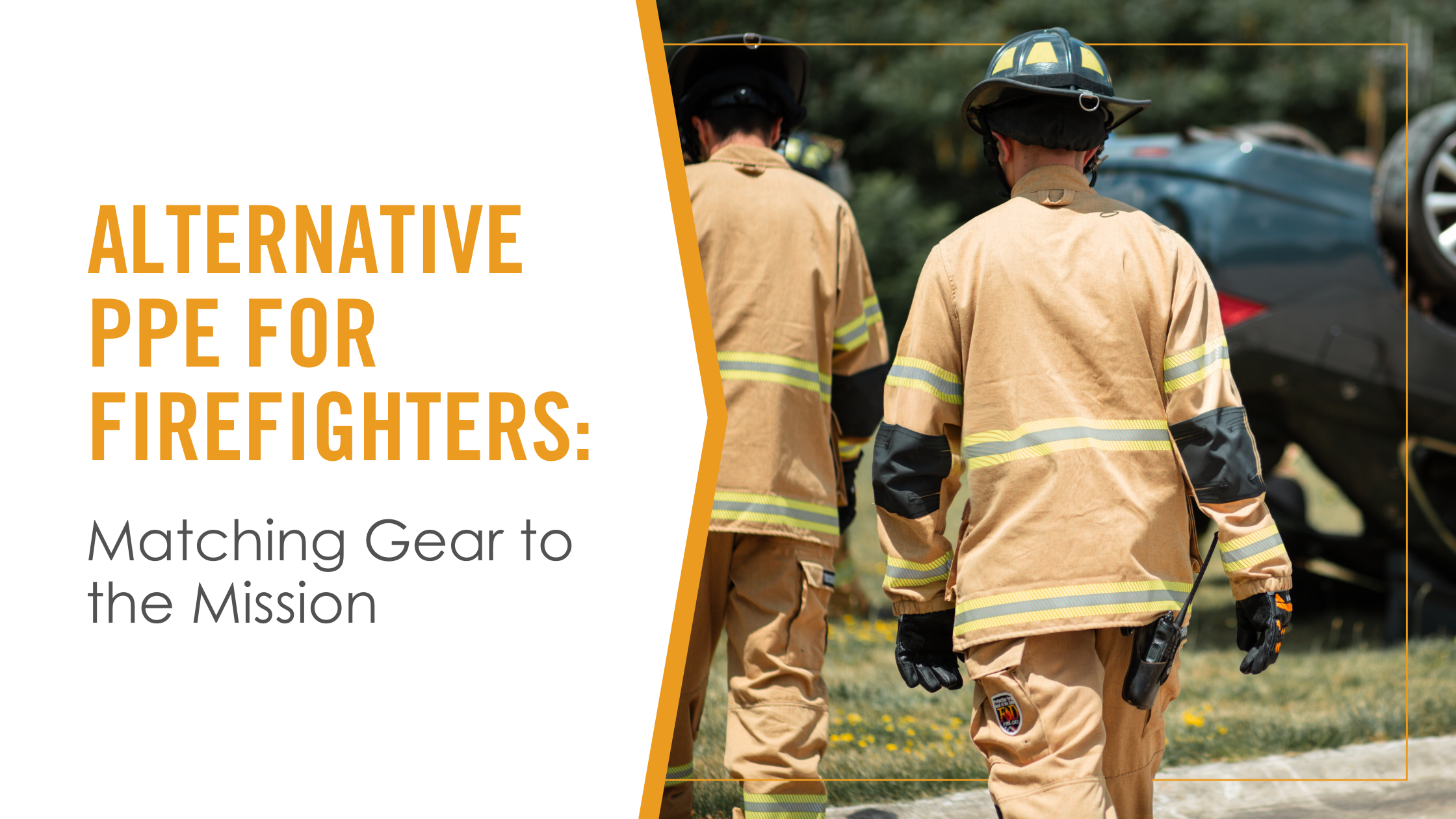While structural firefighting gear is essential for high-heat environments, not every call requires the full protection of turnouts or structural firefighting gloves. Wearing full structural PPE for every incident can lead to unnecessary fatigue, cross contamination, and increased wear and tear on turnouts.
That’s why alternative PPE is becoming a critical part of modern fire service operations.
Alternative PPE is designed for non-structural calls, offering lighter, more breathable protection that’s tailored to the specific hazards of each situation. It’s not a downgrade; it’s a smarter, purpose-built solution that improves safety, comfort, and efficiency.
What Is Alternative PPE?
Unlike structural turnouts, which include three layers (outer shell, thermal liner, and moisture barrier), alternative PPE may use one or two layers depending on the mission. This reduction in bulk allows for greater mobility and breathability, making it ideal for lower-heat environments and extended operations.
Departments should view alternative PPE as a strategic tool, one that complements structural gear rather than replacing it. The goal is to match the level of protection to the actual risks encountered on scene.
NFPA guidelines dictate how gear should be used:
Alternative PPE includes turnout alternatives, as well as accessories like boots and gloves that provide the right amount of protection and features needed on non-structural calls.
Best PPE for Common Non-Structural Fire Calls
Rope Rescue Operations
Rope rescue demands gear with reinforced abrasion zones and high flexibility. Crews often operate in confined spaces or vertical environments, where mobility and durability are critical. PPE certified for technical rescue ensures that responders are protected without being weighed down.
Motor Vehicle Accidents
Incidents involving vehicles require PPE that offers cut resistance and fluid protection. Lightweight gear helps crews move quickly around wreckage while guarding against sharp metal and biohazards. Products like TECGEN51 Multipurpose PPE, which meet multiple NFPA certifications, are well-suited for these scenarios due to their balance of protection and mobility.
Elevator and Confined Space Rescues
Breathability and flexibility are essential in tight quarters. Structural gear can lead to heat stress and restricted movement. Alternative PPE designed for technical rescue provides the necessary protection while allowing crews to operate efficiently in enclosed environments.
Wildland and Urban Interface Firefighting
Wildland operations demand gear that balances thermal protection with breathability. Urban interface scenarios add complexity, requiring PPE that can handle both brush and structural elements. Multifunctional gear offers the versatility needed for these hybrid environments.
Natural Disaster Response
Floods, hurricanes, and other disasters present unique challenges. PPE for these calls often prioritizes liquid protection and comfort over thermal insulation. Lightweight, quick-drying gear helps crews stay safe and effective during prolonged operations in wet or unstable conditions.
EMS and Medical Calls
Biohazard protection and ease of decontamination are top priorities for EMS responses. PPE certified for medical environments (NFPA 1999) ensures that crews are protected from pathogens while maintaining comfort during patient care. Gear with fluid resistance and easy cleaning features is ideal for departments with frequent EMS calls.
Search and Rescue (USAR)
Urban search and rescue operations involve unpredictable environments, from collapsed buildings to remote terrain. USAR gear should provide wide coverage and be able to adapt to multiple scenarios (including moisture protection).
Electrical Emergencies
Thermal protection is essential, but so is cleanliness. Dirty gear can increase the risk of electrocution. PPE used in electrical emergencies should be properly maintained and certified for thermal hazards. Lightweight gear with moisture protection helps reduce heat stress while maintaining safety standards.
How to Choose the Right Alternative PPE
Procurement officers should evaluate gear based on:
- Call Volume and Type: Analyze the department’s most frequent non-structural calls.
- Crew Feedback: Consider input from firefighters on comfort, mobility, and fatigue.
- Budget Efficiency: Look for gear that reduces wear on structural PPE and extends service life.
- Certification Versatility: Prioritize gear certified for multiple uses
- Turnaround Time: Choose made-to-stock options like TECGEN51 Deluxe for faster delivery when gear is needed urgently.
Departments with high call volumes across varied scenarios may benefit from issuing specific gear for each type of call. Smaller departments may find greater value in multifunctional garments that cover multiple roles.
Either way, the right alternative PPE improves crew safety, operational efficiency, and long-term cost management.







Leave a Reply